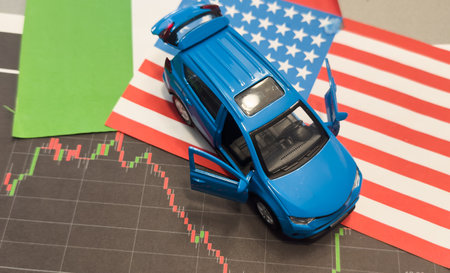1. Understanding Agreed Value Cover
When it comes to insuring your classic car in the UK, one of the most important choices you’ll make is whether to opt for an ‘Agreed Value’ policy. But what exactly does this mean? In simple terms, ‘Agreed Value’ refers to a pre-determined amount that you and your insurer settle on as the payout figure if your vehicle is written off or stolen. Unlike standard insurance, where the payout is typically based on the market value at the time of the claim (which can fluctuate or be subjective), agreed value gives both parties clarity and certainty from the outset.
The process for setting an agreed value usually involves you providing recent photographs of your car, service history, MOT certificates, and receipts for any work carried out—anything that helps prove its current condition and authenticity. Most insurers will also ask for a professional valuation from a recognised classic car specialist or club within the UK. This valuation forms the basis for negotiations, and once both sides are happy, the value is locked in for the period of cover—often twelve months at a time.
This approach is especially popular among British classic car enthusiasts who have invested considerable time and money into restoring or maintaining their vehicles. It ensures that if the worst should happen, you’re not left out of pocket due to depreciation or fluctuating market trends. In summary, agreed value cover gives peace of mind by guaranteeing a fixed payout, provided you keep up with any documentation requirements set by your insurer.
2. Exploring Market Value Cover
When it comes to insuring your classic car in the UK, understanding Market Value cover is key. This type of policy means your insurer will pay out the current market value of your vehicle if it’s written off or stolen. Unlike agreed value policies, market value is determined at the point of claim and can fluctuate based on various factors.
How Do Insurers Assess Market Value?
British insurers typically assess your classic car’s value by referencing similar vehicles currently for sale, recent auction results, industry price guides, and overall market trends. They’ll also consider the specific condition, mileage, originality, and service history of your car at the time of the incident.
Key Factors Affecting Market Value Evaluation
| Factor | Description | Impact on Value |
|---|---|---|
| Vehicle Condition | Includes paintwork, interior, rust, mechanical state | Better condition generally increases market value |
| Mileage | Total miles driven compared to similar models | Lower mileage usually boosts value |
| Originality & Modifications | Whether parts are original or aftermarket upgrades are fitted | Original cars often hold higher value among collectors |
| Service History | Comprehensive records showing regular maintenance and care | A full history can enhance value and buyer confidence |
| Current Market Trends | The popularity of make/model and demand in the market at claim time | High demand can push values up; low demand does the opposite |
What Does This Mean for Classic Car Owners?
If you opt for a market value insurance policy, be aware that your payout may not always match what you believe your car is worth, especially if the market has dipped or if comparable sales are scarce. It’s wise to keep detailed records and evidence of your cars condition to support a fair valuation should you ever need to make a claim.

3. Key Differences Between Agreed Value and Market Value Policies
When choosing classic car insurance, it’s crucial to understand the differences between Agreed Value and Market Value cover, as each offers distinct advantages and drawbacks depending on your needs as a classic car owner.
Payout Certainty
Agreed Value policies guarantee a set payout if your vehicle is written off or stolen. This amount is decided upon and confirmed in writing between you and your insurer at the start of your policy. It means you know exactly what you’ll receive, no surprises or arguments later on. In contrast, Market Value policies pay out what your car is worth at the time of the claim, based on current market trends and valuations. This can lead to disputes, especially if market values fluctuate or your car’s condition isn’t fully appreciated by generic pricing guides.
Premium Cost
Agreed Value cover usually comes with higher premiums because it offers more certainty and potentially higher payouts. You’re paying for peace of mind that your pride and joy is fully covered for its true worth. Market Value cover, however, tends to be cheaper since it relies on general market assessments, which may undervalue rare or exceptionally maintained classics.
Suitability for Different Owners
Agreed Value insurance is ideal for enthusiasts who have invested significant time and money into restoring or maintaining their vehicles, or those owning rare models where the market value doesn’t reflect the car’s actual worth. It’s also well-suited for collectors wanting to safeguard their investment. Market Value insurance may suit owners of more common classics or those looking for lower-cost cover who are less concerned about receiving a set payout figure in the event of total loss.
The Bottom Line
If knowing exactly what you’ll get back matters most—especially after spending years perfecting your motor—Agreed Value is probably the way to go. If you’re comfortable with some uncertainty and want to keep premiums down, Market Value might fit the bill better. Always weigh up these key distinctions before deciding which type of policy suits you best.
4. Pros and Cons: Agreed Value vs. Market Value
When it comes to classic car insurance in the UK, choosing between Agreed Value and Market Value can feel a bit like picking between a cup of builders’ tea and a fancy flat white – both have their place depending on what you’re after. Here’s a straightforward breakdown of the main advantages and disadvantages for each option, with examples that’ll hit home for any British classic car lover.
| Option | Advantages | Disadvantages |
|---|---|---|
| Agreed Value |
|
|
| Market Value |
|
|
If you own a unique, lovingly-restored classic where value goes beyond pounds and pence, Agreed Value offers predictability and security. For more everyday classics or those not looking to spend extra on premiums, Market Value could suit just fine. Remember, it’s all about matching the cover to how much your classic means to you — both financially and emotionally.
5. Making the Right Choice for Your Classic Car
Choosing between agreed value and market value policies is a significant decision for any classic car owner in the UK. To make an informed choice, it’s important to consider both your personal circumstances and the unique features of the British classic car market.
Understand Your Car’s True Worth
If you’ve invested time and money into restoring your vehicle or if it holds sentimental value, an agreed value policy may provide greater peace of mind. This option lets you and your insurer agree on a set payout, reflecting the actual worth of your cherished classic, not just what someone might pay on the open market.
Consider How You Use Your Classic
Are you a weekend show-goer, or is your classic a daily driver? If your vehicle is rarely used and kept in pristine condition, agreed value could better protect your investment. However, if you use your classic more casually, a market value policy might be sufficient, especially if your car’s value aligns closely with current sales prices.
Tap Into the Local Community
The British classic car scene is vibrant and supportive. Attend local club meetings or reach out online; fellow enthusiasts are often happy to share their experiences with different insurers and policies. Their insights can help you gauge which option works best in practice.
Consult Specialist Insurers
Many UK-based insurers specialise in classic cars and understand their nuances. It’s wise to get quotes from multiple providers and ask about their claims process—especially how they handle valuations after loss or damage. Some may even offer free valuations as part of their service.
Other Tips for British Owners
- Check if your policy covers participation in rallies, shows, or European travel.
- Ask about salvage retention rights—important if you want to keep your car after a claim.
- Review storage requirements: some insurers offer lower premiums for vehicles kept in locked garages.
Ultimately, choosing between agreed and market value comes down to balancing financial protection with practicality. Taking the time to research options tailored to the UK classic car community will help ensure your pride and joy is properly protected for years to come.
6. Frequently Asked Questions in the UK Context
When it comes to classic car insurance, British drivers often have several questions about the difference between Agreed Value and Market Value policies. Below, we address the most common queries and clarify potential points of confusion.
What’s the main difference between Agreed Value and Market Value?
Agreed Value is a sum you and your insurer agree upon when taking out the policy, reflecting your classic car’s worth based on evidence like valuations, photos, or restoration receipts. If your car is written off or stolen, you get this set amount. Market Value, on the other hand, is what your car would fetch on the open market at the time of a claim—subject to depreciation and fluctuating demand.
Is Agreed Value always higher than Market Value?
Not necessarily. While Agreed Value can be higher if your classic is rare or has sentimental upgrades, sometimes it’s close to Market Value—especially for more common classics. The key benefit is certainty: you know exactly what payout to expect if disaster strikes.
Do all insurers offer Agreed Value policies in the UK?
No. Some mainstream insurers may only offer Market Value cover for older vehicles. Specialist classic car insurers are more likely to provide Agreed Value policies tailored to enthusiasts’ needs.
How do I prove my classic’s value for an Agreed Value policy?
Insurers usually ask for independent valuation certificates, detailed photographs, and restoration invoices. This helps ensure that both parties are clear on what the car’s worth is at policy inception.
Does an Agreed Value policy cost more?
Premiums can be slightly higher due to the increased certainty of payout. However, many owners see this as worthwhile peace of mind, especially given rising values in the UK classic car market.
If my car appreciates in value, can I update my Agreed Value?
Yes—most insurers recommend reviewing your Agreed Value annually or after any significant improvements. This keeps your cover in line with current market trends and ensures you’re not underinsured.
Which option is best for my classic car?
If you own a vehicle with unique history, sentimental attachment, or substantial investment in restoration, an Agreed Value policy typically offers better protection. For less valuable or easily replaced classics, Market Value might suffice—but always weigh up how much certainty matters to you as a British classic car owner.


